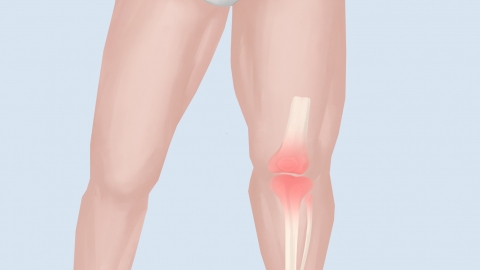How is rheumatic arthritis treated?
Generally, the treatment methods for rheumatic arthritis include general management, medication, physical therapy, traditional Chinese medicine (TCM), and surgical treatment. A detailed analysis is as follows:
1. General Management
During acute flare-ups, patients should rest adequately and avoid excessive joint activity to prevent worsening of joint damage. During remission periods, appropriate joint function exercises such as flexion and extension movements or walking are recommended to maintain joint mobility and prevent muscle atrophy. It's also important to stay warm and avoid cold, damp environments that may irritate the joints and trigger disease recurrence.

2. Medication
Drug therapy is key to controlling disease progression, and patients should take medications under medical supervision. Nonsteroidal anti-inflammatory drugs (NSAIDs), such as ibuprofen sustained-release capsules and diclofenac sodium enteric-coated tablets, help reduce joint inflammation and pain. Disease-modifying antirheumatic drugs (DMARDs), such as methotrexate tablets and leflunomide tablets, can slow down joint and bone destruction. If a streptococcal infection accompanies an acute episode, penicillin V potassium tablets may be used to control the infection.
3. Physical Therapy
Physical therapy can gently relieve joint discomfort. Common approaches include heat application, ultrasound therapy, and transcutaneous electrical nerve stimulation (TENS). Heat therapy improves local blood circulation in the joints and reduces inflammatory swelling. Ultrasound therapy helps deeply relax soft tissues around the joints and alleviate stiffness. TENS blocks pain signal transmission, thereby reducing pain perception.
4. Traditional Chinese Medicine (TCM)
According to TCM, rheumatic arthritis results from invasion by wind, cold, and dampness pathogens, along with impaired flow of qi and blood. Treatment typically involves herbal medicines that dispel wind and dampness, unblock meridians, and relieve pain—such as Fengshi Gutong Capsules and Duhuo Jisheng Pills. Acupuncture at specific points like Quchi (LI11) and Zusanli (ST36) can regulate qi and blood flow, helping to relieve joint pain and stiffness and improve overall symptoms.
5. Surgical Treatment
If severe joint deformity or restricted movement significantly affects daily life, surgical intervention may be considered. Common procedures include arthroscopic debridement to remove inflamed synovial tissue and joint fluid, and joint replacement surgery, which is suitable for patients with advanced joint destruction. Joint replacement restores function by substituting damaged joint components.
In addition, during treatment, patients should undergo regular follow-up examinations as directed by their physicians to monitor disease progression. Maintaining a regular lifestyle and balanced diet while avoiding excessive fatigue is essential. If symptoms such as increased joint pain or significant swelling occur, prompt medical consultation is necessary to adjust the treatment plan.





